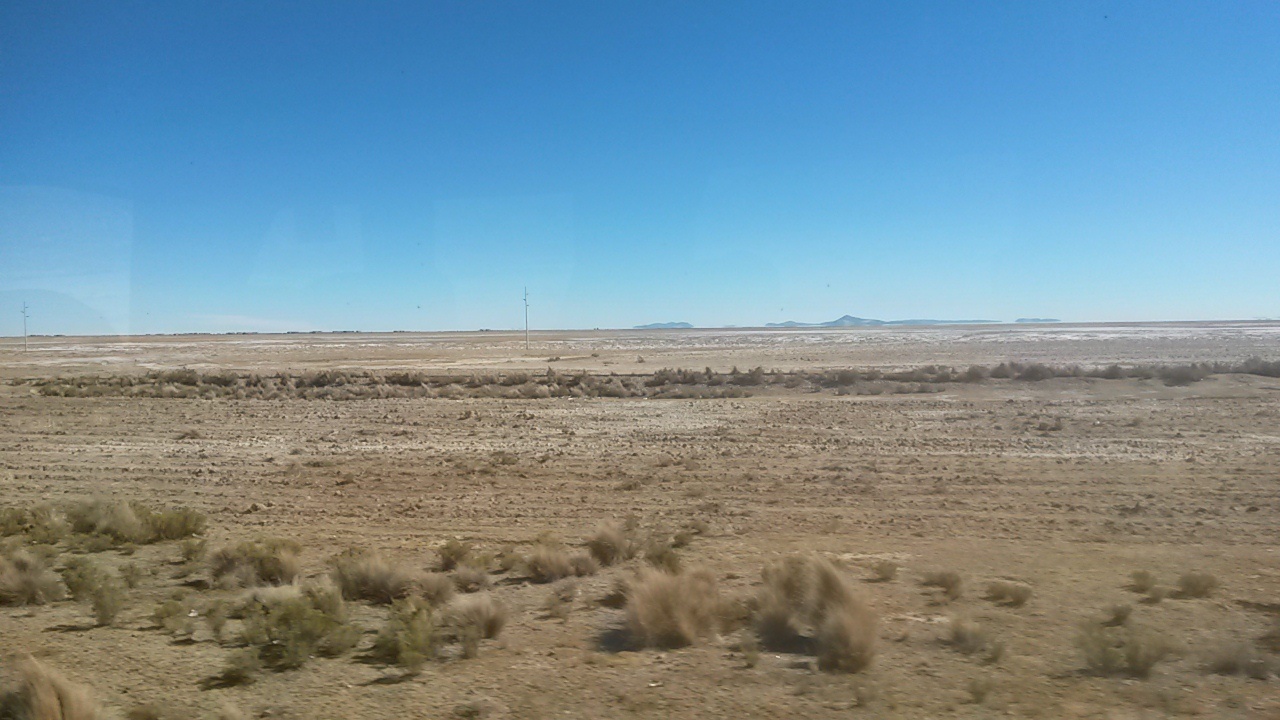
Uploaded on 2015-10-15 by jetoff41
-------------------------------------------------------------------- Well, Oruro isn’t a huge city. **Neither** there **aren't many towers**, **nor wide street canyons** which could entrap solar and thermal radiation. Furthermore, it’s a city with several green parks and land-areas in the centre. Therefore, the UHI effect isn’t that significant like in LA oder Washington D.C. Another reason for a good heat exchange between the buildings and the surrounding air might be the **wind**. It’s always very windy here, especially in the late afternoon and during the night. No matter if you are in the rural area (Altiplano) or in the urban part. **IMAGES** ![IMG 1: City of Oruro (narrow road)][1] ![IMG 2: Surrounding rural area (altiplano)][2] In the first image (City of Oruro - narrow road), you can’t see much sun entering the walls or the road. Therefore, this place can’t be very „heat saving“. The second picture shows the surrounding rural area of Oruro, the altiplano. Although there is many sun, there is nothing that can save these high amount of energy. So if the sun goes down and the wind starts blowing, the temperature changes rapidly from 20° during the midday to 2° or 3° during the night. 3 Which are the measures you would propose? ------------------------------------------- Like almost everywhere in the world, people are moving into the city. Also here in Oruro, the population of the city is rising. This might lead to an increase in towers, big hotels and more polluting industry. Therefore, I would act precautionary. But not just with more parks and green areas. I also would copy something beautiful and simultaneously auxiliary from the capital of Bolivia, Sucre. It has the nickname „La Ciudad blanca“ (=the white city), because almost every building is painted white. As the authors of [climatecentral.org][3] list „white roofs and alternative materials for urban infrastructure“ as a helpful way to „reduce the effects of urban heat islands“, painting more houses in Oruro like the ones in Sucre should be a effective measure against the UHI phenomenon. 4 Is UHI effect concerning policy making in your area? ------------------------------------------------------ The current president of Bolivia, Evo Morales, isn’t very interested in the environment. His party (MOS) is supporting the delivery of crude oil, gas and ore. Everything for a rising economy. Therefore, I can’t imagine that the government has plans against the UHI effect. But I have to add that this is just an opinion because I couldn’t find information concerning this topic. Neighbors and colleagues from Bolivia couldn’t help me too. However, I have some little information from my homeland, Austria. **Vienna**, leading the ranking of the most livable cities in the world (according to the 2015 Quality of Living survey), is currently **working on a project to combat the UHI effect.** There plan mainly includes more green areas, open water spaces and more trees „to provide shade on the streets“. More information can be found here: [http://www.thelocal.at/20150717/vienna-works-to-fight-urban-heat-island-effect][4] [1]: http://s30.postimg.org/n08aeefv5/oruro_1.jpg [2]: http://s23.postimg.org/s996v1w8b/oruro_2.jpg [3]: http://www.climatecentral.org/news/urban-heat-islands-threaten-us-health-17919 [4]: http://www.thelocal.at/20150717/vienna-works-to-fight-urban-heat-island-effect